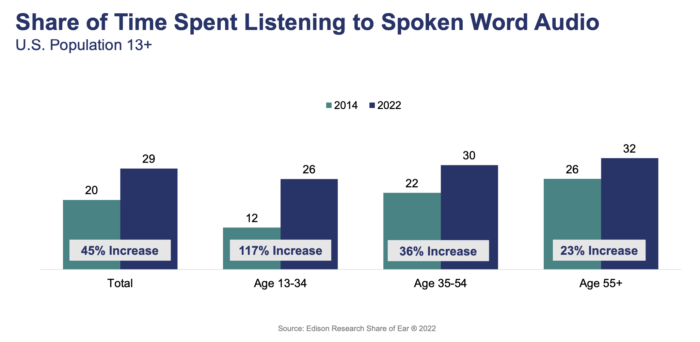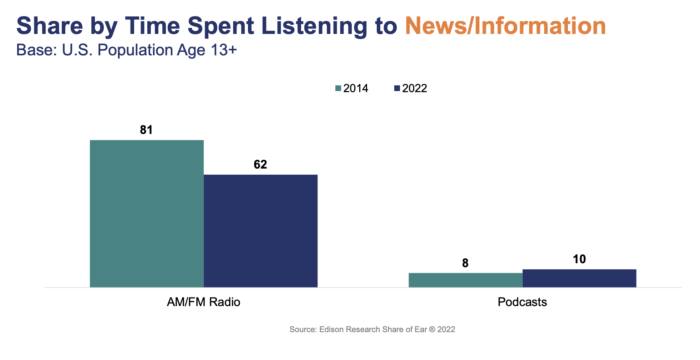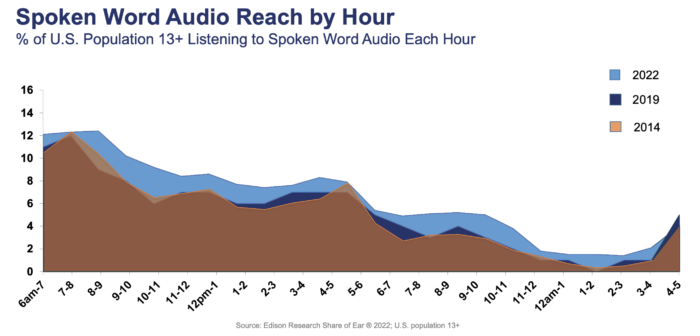A new study shows more young Americans are listening to news, podcasts, and audiobooks than ever. Nearly all of that growth comes from listening on digital devices like phones, computers, smart speakers, and internet-connected TVs — and not AM/FM radio.
The authors of the 2022 Spoken Word Audio Report conducted interviews in English and Spanish with 4,118 U.S. residents aged 13 and older. The report, released annually since 2014, is part of a partnership between NPR and Edison Research. For their purposes, “spoken word audio” means pretty much everything but music — news and talk shows on AM/FM radio plus podcasts and audiobooks of every stripe.
While the share of Americans listening to spoken word audio increased across all age groups, it increased the most for those ages 13 to 34, the report found. That age group now dedicates 26% of its listening hours to spoken word audio (instead of music) — up from just 12% in 2014.

Here’s a few other findings that stood out:
The number of Gen Zers who have ever listened to a podcast shot up. Nearly 80% say they’ve listened to one, up from 37% in 2014.

Gen Z is also the most likely to listen on their mobile device. Other groups listened to more spoken word audio on radio, smart speaker, or computer.

Americans are listening to less news on AM/FM radio, but the increase in podcast listening isn’t making up the gap.

Listening peaks in the morning. A second spike occurs around the evening rush hour — but that second peak has rounded out somewhat, possibly due to fewer people commuting and listening in their cars.

When it comes to weekly podcast listeners, comedy is king.

You can download the full report here.
Leave a comment